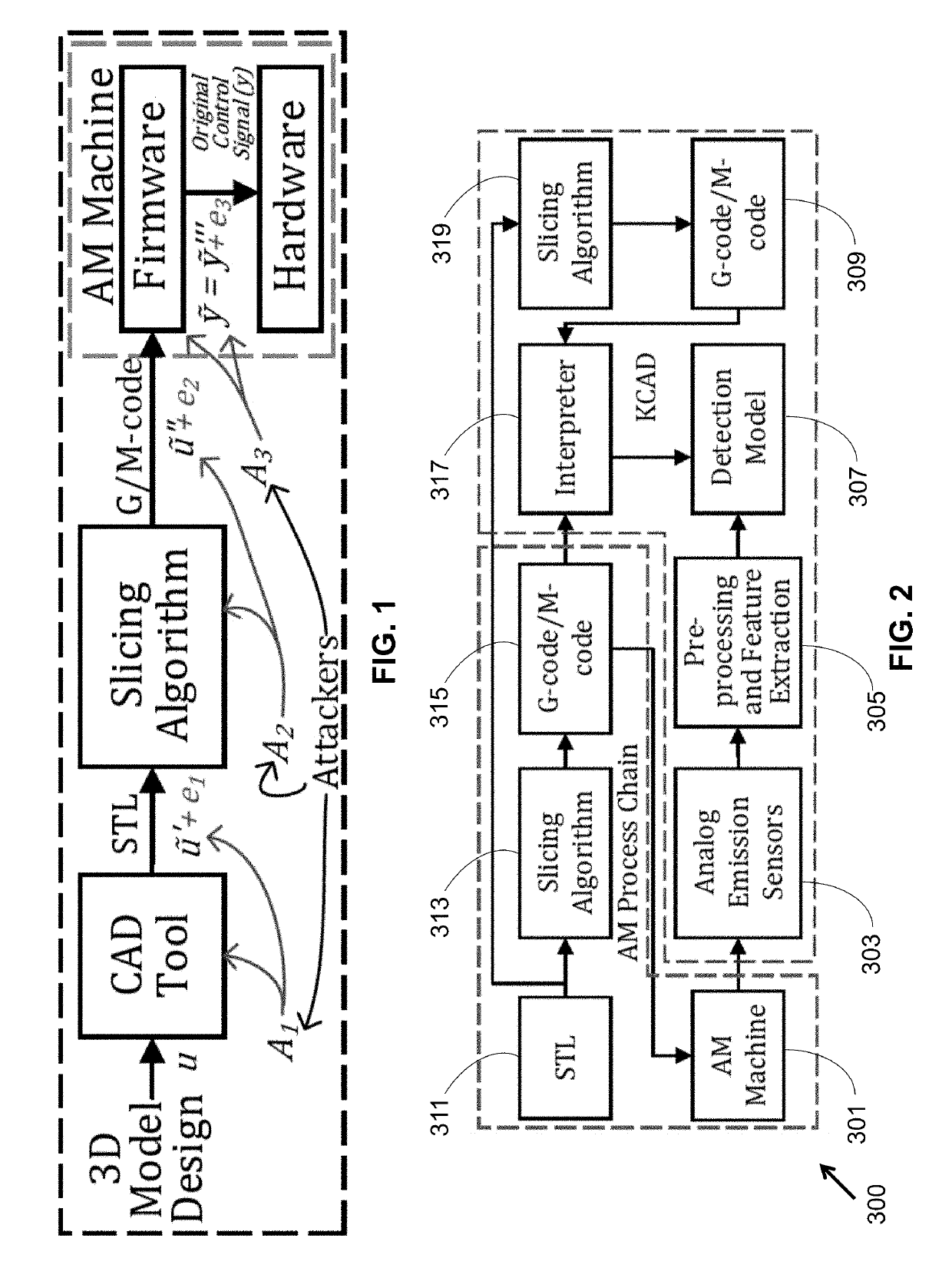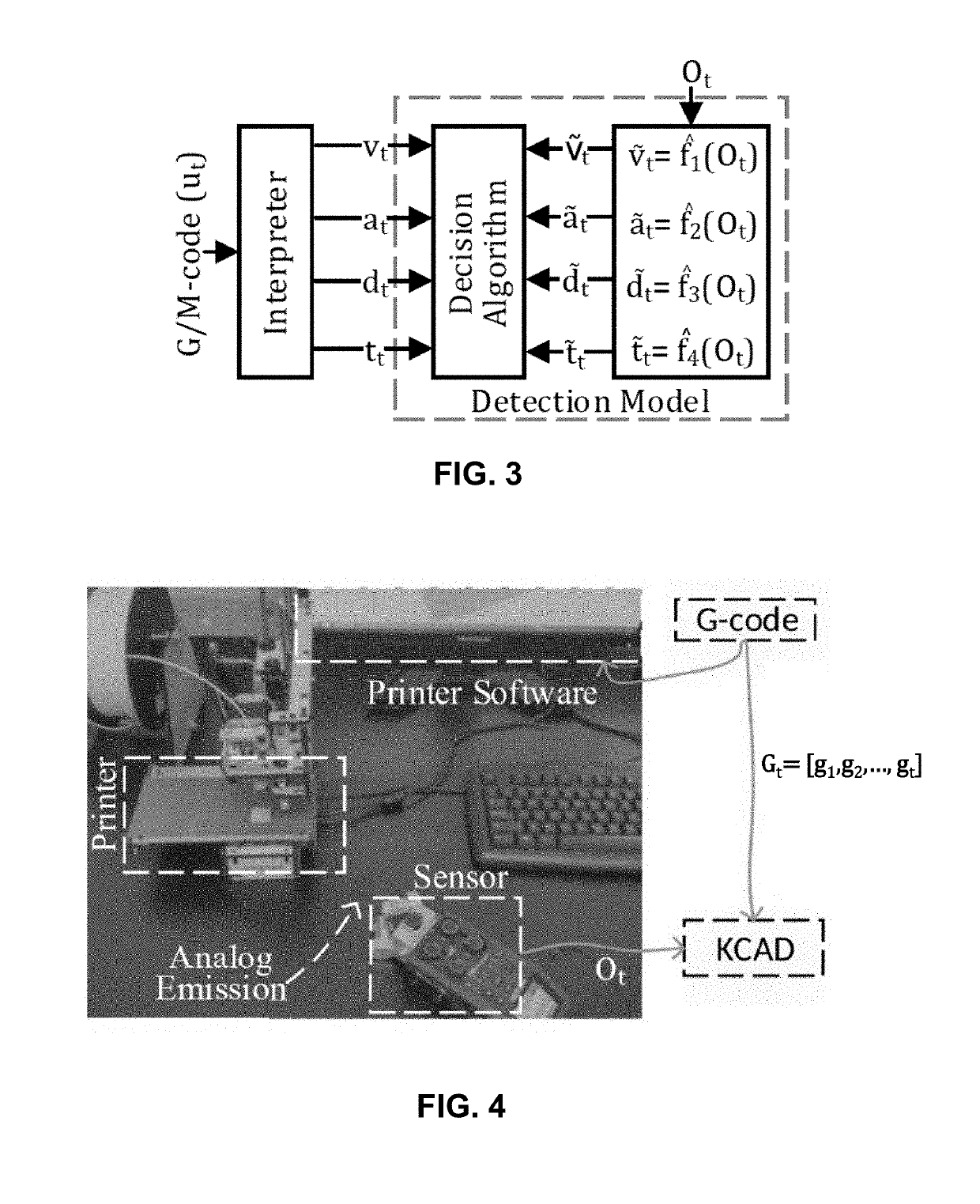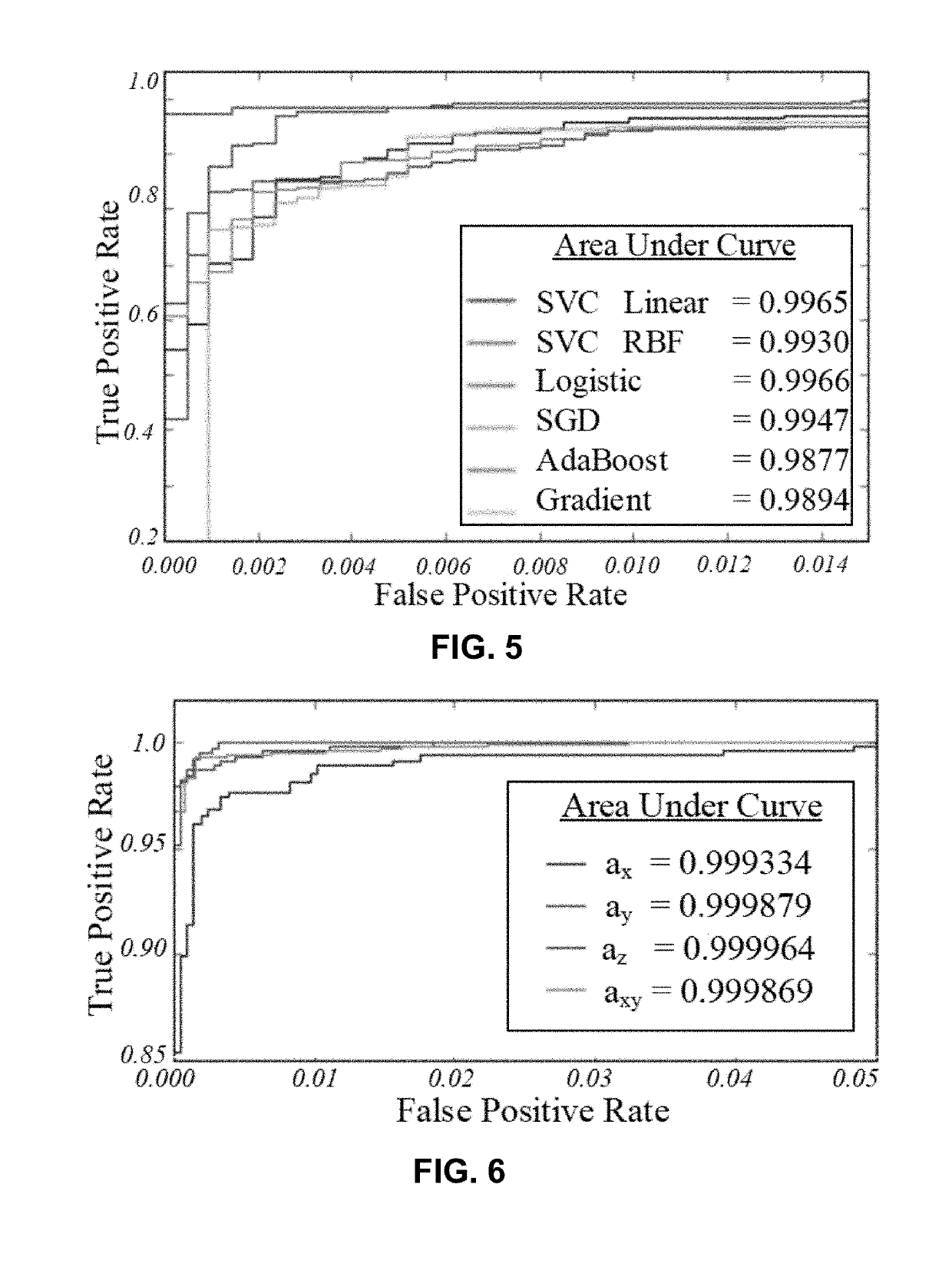Information leakage-aware computer aided cyber-physical manufacturing
a technology of information leakage and computer assisted cyber-physical manufacturing, applied in computing, instruments, electric digital data processing, etc., can solve the problems of reducing the success rate of an attacker by 8.74%, unique security challenges, and process costs, so as to minimize information leakage, prevent confidentiality breaches, and minimize information leakage
Active Publication Date: 2019-07-25
RGT UNIV OF CALIFORNIA
View PDF0 Cites 13 Cited by
- Summary
- Abstract
- Description
- Claims
- Application Information
AI Technical Summary
Benefits of technology
The invention features a method to prevent confidentiality breach in cyber-physical additive manufacturing systems. It does not require any changes in the physical structure of the system, but instead allows the cyber-domain tools to be aware of the existing information leakage. The method then changes the machine process or product design parameters in the cyber-domain to minimize the information leakage. The result is a reduction of mutual information in different physical-domain channels, such as acoustics, power, electromagnetic emissions, and vibration. This methodology is effective in preventing attacks and improving processing time.
Problems solved by technology
This union, however, induces new cross-domain vulnerabilities that pose unique security challenges.
One of these challenges is preventing confidentiality breach, caused by physical-to-cyber domain attacks.
However, this process can be costly due to added hardware modification.
Method used
the structure of the environmentally friendly knitted fabric provided by the present invention; figure 2 Flow chart of the yarn wrapping machine for environmentally friendly knitted fabrics and storage devices; image 3 Is the parameter map of the yarn covering machine
View moreImage
Smart Image Click on the blue labels to locate them in the text.
Smart ImageViewing Examples
Examples
Experimental program
Comparison scheme
Effect test
example
[0130]The following is a non-limiting example of the present invention. It is to be understood that said example is not intended to limit the present invention in any way. Equivalents or substitutes are within the scope of the present invention.
the structure of the environmentally friendly knitted fabric provided by the present invention; figure 2 Flow chart of the yarn wrapping machine for environmentally friendly knitted fabrics and storage devices; image 3 Is the parameter map of the yarn covering machine
Login to View More PUM
 Login to View More
Login to View More Abstract
A methodology as described herein allows cyber-domain tools such as computer aided-manufacturing (CAM) to be aware of the existing information leakage. Then, either machine process or product design parameters in the cyber-domain are changed to minimize the information leakage. This methodology aids the existing cyber-domain and physical-domain security solution by utilizing the cross-domain relationship.
Description
CROSS-REFERENCES TO RELATED APPLICATIONS[0001]This application is a continuation-in-part, and claims benefit of U.S. patent application Ser. No. 15 / 439,458, filed Feb. 22, 2017, the specification of which is incorporated herein in its entirety by reference.[0002]This application is a continuation-in-part, and claims benefit of U.S. patent application Ser. No. 16 / 244,390, filed Jan. 10, 2019, which is a divisional of U.S. patent application Ser. No. 15 / 438,997, filed Feb. 22, 2017, now U.S. Pat. No. 10,212,185, which claims benefit to provisional U.S. Patent Application No. 62 / 298,091, filed Feb. 22, 2016, the specifications of which are incorporated herein in its entirety by reference.STATEMENT REGARDING FEDERALLY SPONSORED RESEARCH OR DEVELOPMENT[0003]This invention was made with government support under Grant No. CNS 1546993 awarded by NSF. The government has certain rights in the invention.BACKGROUND OF THE INVENTIONField of the Invention[0004]The present invention relates to met...
Claims
the structure of the environmentally friendly knitted fabric provided by the present invention; figure 2 Flow chart of the yarn wrapping machine for environmentally friendly knitted fabrics and storage devices; image 3 Is the parameter map of the yarn covering machine
Login to View More Application Information
Patent Timeline
 Login to View More
Login to View More Patent Type & Authority Applications(United States)
IPC IPC(8): H04L29/06
CPCH04L63/1433H04L63/1466G06F21/608G06F21/554G06F21/10B33Y99/00B33Y50/02
Inventor AL FARUQUE, MOHAMMAD ABDULLAHWAN, JIANGROKKA CHHETRI, SUJITFAEZI, SINA
Owner RGT UNIV OF CALIFORNIA
Features
- R&D
- Intellectual Property
- Life Sciences
- Materials
- Tech Scout
Why Patsnap Eureka
- Unparalleled Data Quality
- Higher Quality Content
- 60% Fewer Hallucinations
Social media
Patsnap Eureka Blog
Learn More Browse by: Latest US Patents, China's latest patents, Technical Efficacy Thesaurus, Application Domain, Technology Topic, Popular Technical Reports.
© 2025 PatSnap. All rights reserved.Legal|Privacy policy|Modern Slavery Act Transparency Statement|Sitemap|About US| Contact US: help@patsnap.com



